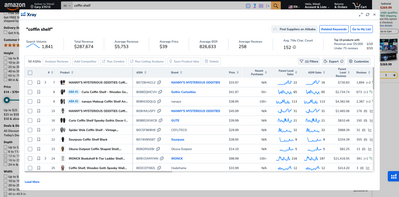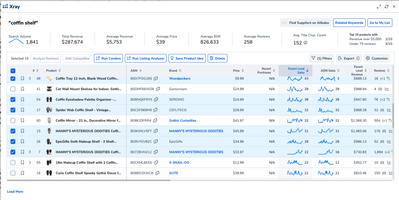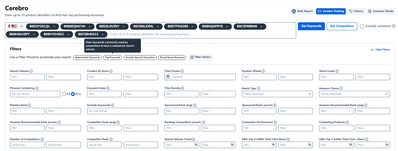Understanding which keywords perform best in your niche is one of the smartest moves you can make as a seller.
It’s what separates those who guess from those who scale.
That's why when you analyze multiple ASINs instead of just one, you get a much clearer picture of the keywords that actually drive sales.
Some of these terms show up consistently across top-performing listings, while others are hidden gems—lower in competition but rich in opportunity. But it is identifying both that allows you to build a strategy that maximizes visibility, relevance, and ultimately, profitability.
Start by searching your niche on Amazon using a broad term like “coffin shelf.” Once the results load, open up Helium 10’s X-Ray in the Chrome Extension to break down the listings.
Select up to 20 relevant ASINs to analyze—ideally including your own if it’s live. If not, pick a strong competitor that closely matches your product. Then head into Cerebro and run the keyword analysis.
Cerebro will surface thousands of keywords that at least one of the ASINs ranks for. This is where the magic happens.
Apply filters to uncover the keywords that really matter. Use the Top Keywords filter, set the search volume to 300 or more, and look for terms where the average rank across ASINs is between 1 and 50.
To make sure the keyword is truly relevant to the niche, you’ll want at least three competitors ranking for it. The Competitor Performance Score can help you spot the strongest terms—a 10/10 score usually means most selected ASINs are ranking high.
Hover over the Relative Rank column to see who ranks where.
Once you’ve locked in your top keywords, it’s time to put them to work.
Optimize your listing—titles, bullet points, backend keywords—with these terms to boost your organic visibility. Then create PPC campaigns focused around them to reinforce your positioning and get in front of high-intent shoppers.
Dialing into the right keywords means more than better rankings—it means more eyes on your product, more conversions, and more efficient ad spend. You’re no longer casting a wide net; you’re targeting the exact terms that drive results. This kind of focused strategy gives you a competitive edge and puts you in control of your growth. Hope you guys don't just read this but you actually go implement!! Good luck!






